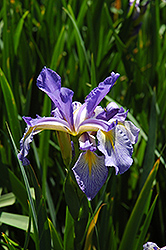Fri & Sat 8am - 8pm
Sun 8am - 7pm
Anytown, USA 12345
fax: 261.787.0463
e-mail: info@successgc.com


Plant Finder

Height: 30 inches
Spacing: 18 inches
Sunlight:
![]()
![]()
Hardiness Zone: 2a
Ornamental Features
Spuria Iris has masses of beautiful royal blue flag-like flowers with white throats and yellow veins at the ends of the stems in mid spring, which are most effective when planted in groupings. The flowers are excellent for cutting. Its sword-like leaves remain green in color throughout the season.
Landscape Attributes
Spuria Iris is an herbaceous perennial with an upright spreading habit of growth. Its medium texture blends into the garden, but can always be balanced by a couple of finer or coarser plants for an effective composition.
This plant will require occasional maintenance and upkeep, and should be cut back in late fall in preparation for winter. Deer don't particularly care for this plant and will usually leave it alone in favor of tastier treats. It has no significant negative characteristics.
Spuria Iris is recommended for the following landscape applications;
- Mass Planting
- General Garden Use
Planting & Growing
Spuria Iris will grow to be about 24 inches tall at maturity, with a spread of 24 inches. When grown in masses or used as a bedding plant, individual plants should be spaced approximately 18 inches apart. It grows at a medium rate, and under ideal conditions can be expected to live for approximately 10 years. As an herbaceous perennial, this plant will usually die back to the crown each winter, and will regrow from the base each spring. Be careful not to disturb the crown in late winter when it may not be readily seen!
This plant does best in full sun to partial shade. It prefers to grow in average to moist conditions, and shouldn't be allowed to dry out. It is not particular as to soil type or pH. It is somewhat tolerant of urban pollution. This species is not originally from North America. It can be propagated by division.
